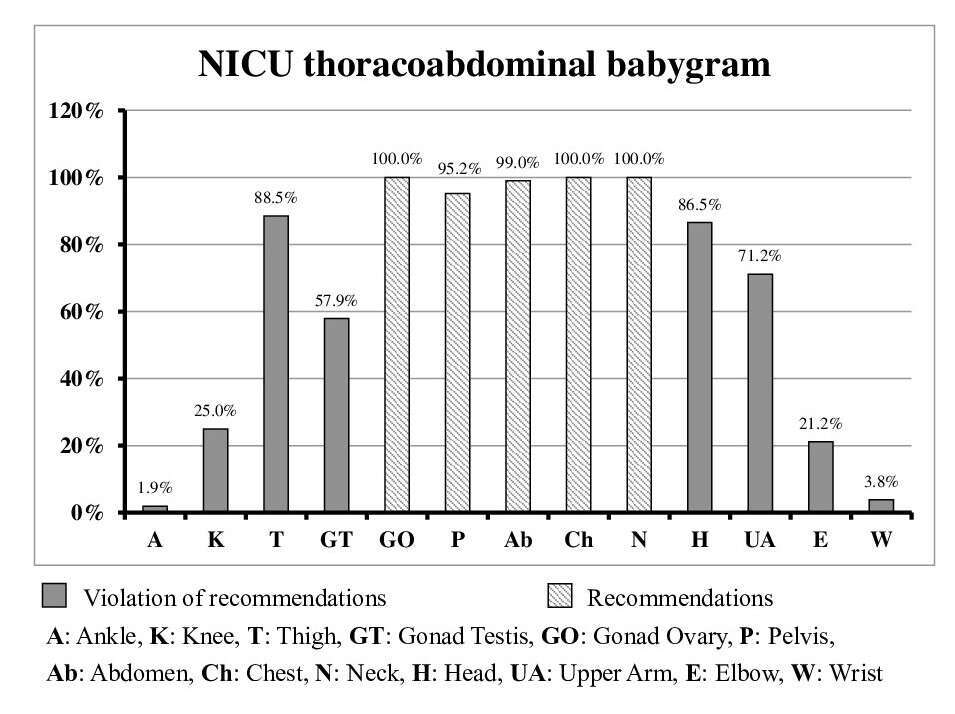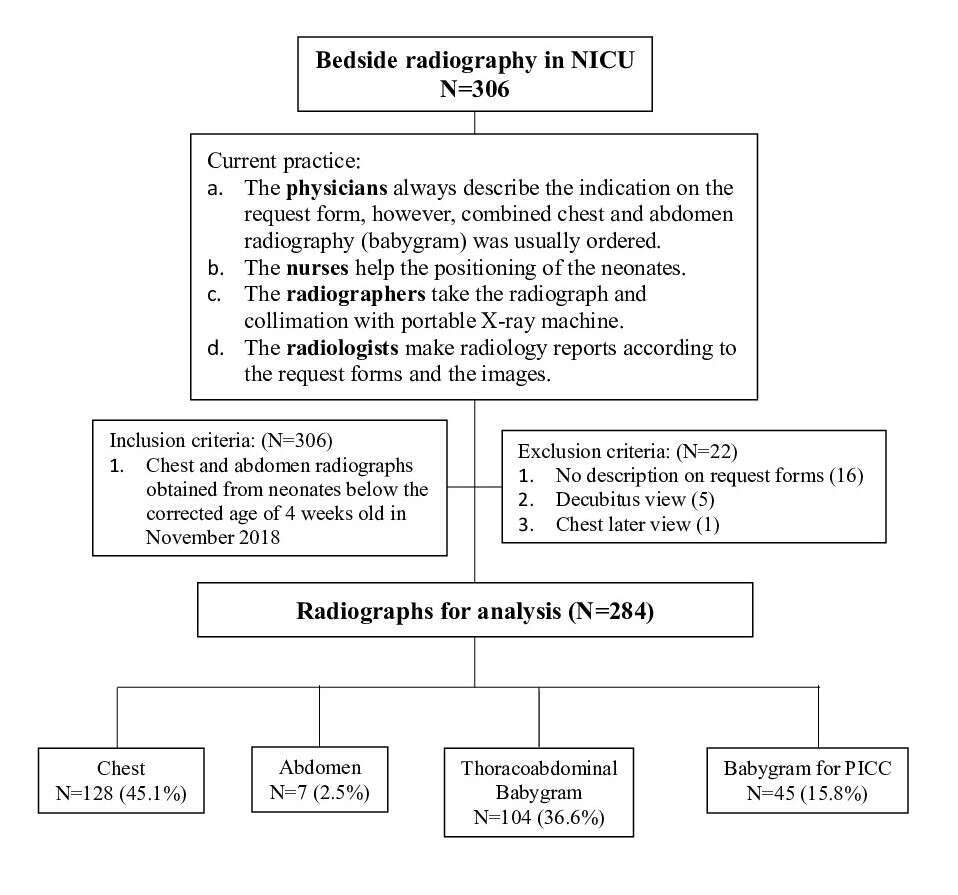
Unnecessary Radiation Exposure of Neonates during Diagnostic Radiography in a Neonatal Intensive Care Unit (NICU)
2Department of Radiology, E-Da Hospital, I-Shou University, Kaohsiung, Taiwan, TAIWAN




Objective:
To study the degree of unnecessary radiation exposure during diagnostic radiography in a neonatal intensive care unit (NICU).
Study Design:
Newborns admitted to the NICU of a tertiary care center from September to November 2018 were enrolled. We retrospectively reviewed their radiographs performed at the request of their physician, including of the chest, abdomen, and thoracoabdominal babygram. Unnecessary radiation exposure was defined as body parts exposed to radiation in the radiograph other than the fields of interest.
Results:
A total of 306 diagnostic radiographs from 88 neonates were included in this study. The mean birth weight was 2471 g and the mean gestational age was 35.7 weeks. The mean number of radiographs for each infant was 3.5 (range: 1–45). Finally, 284 radiographs were collected for analysis. The incidence rates of unnecessary radiation exposure in chest, abdomen, and thoracoabdominal babygram radiography examinations were 78.1%, 85.7%, and 88.5% to the thighs, 25.8%, 28.6%, and 25% to the knees, 75.0%, 100%, and 71.2% to the upper arms, 17.2%, 28.6%, and 21.2% to the elbows, 100%, 0%, and 0% to the ovaries, and 68.1%, 50%, and 57.9% to the testes, respectively. In babygrams specifically ordered to check the location of peripherally inserted central catheters in upper and lower arms, the incidence rates of unnecessary exposure were 92.3% and 84.4% to the contralateral limbs, 100% and 0% to the ovaries, and 66.7% and 0% to the testes, respectively.
Conclusion:
Unnecessary radiation exposure is a significant but usually ignored issue. We found a high percentage of unnecessary radiation exposure to the limbs, head, and gonads in newborns undergoing radiography. No regular use of gonadal shielding, as well as inappropriate positioning, restraining, and collimation were major contributing factors. Establishing and adhering a standard protocol for diagnostic radiography in a NICU are urgently needed.
Powered by Eventact EMS